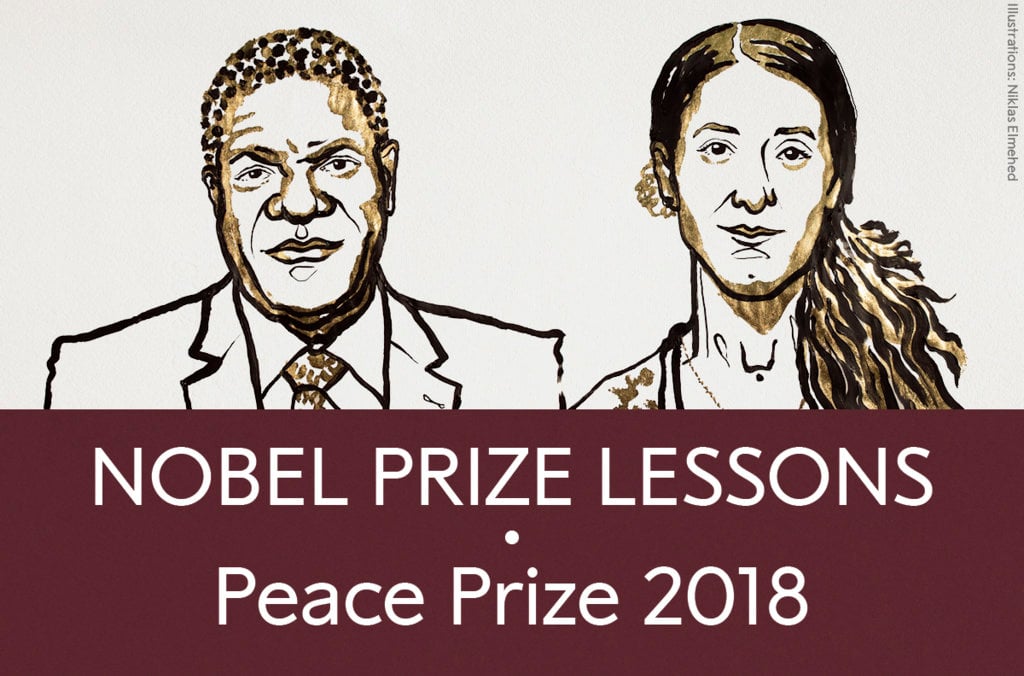The Nobel Peace Prize represents not just an accolade, but rather a beacon of hope illuminating the path toward global harmony. While many celebrate laureates for their extraordinary accomplishments, the broader teachings derived from this esteemed prize reveal profound insights that resonate deeply with the Bahá’í Faith. The intersection of these teachings and the values embodied by Nobel laureates elucidates a compelling narrative of human aspirations toward peace and unity.
1. The Pursuit of Universal Peace
Central to Bahá’í teachings is the principle of universal peace, a concept that aligns seamlessly with the essence of the Nobel Peace Prize. The award’s recipients often embody this principle by promoting dialogue and mutual understanding among diverse communities. For instance, the work of figures like Malala Yousafzai in advocating for education and women’s rights transcends borders and reflects the Bahá’í belief that education serves as a cornerstone for achieving global peace.
Herein lies a potent metaphor: envision peace as a vast ocean, with each wave representing an isolated effort toward harmony. The Nobel laureates are like lighthouses, casting beams of enlightenment on murky waters, guiding humanity towards a collective understanding. Their efforts illuminate the interconnectedness of societal progress and individual actions, echoing the Bahá’í tenet that the advancement of civilization hinges upon the coexistence of diverse cultures and beliefs.
2. The Transformative Power of Service
Service to humanity is a pivotal concept in both the Nobel discourse and Bahá’í philosophy. Many Nobel laureates exemplify the transformative power of selfless service, working tirelessly for the betterment of humanity. This parallels the Bahá’í injunction that one must regard service as a primary avenue for spiritual development.
Consider Wangari Maathai, who founded the Green Belt Movement, championing environmental sustainability while empowering women and combating poverty. Such initiatives resonate with the Bahá’í emphasis on stewardship of the Earth. This intertwining of ecological mindfulness and social equity can be likened to a symbiotic relationship—a delicate ecosystem where growth in one area fosters flourishing in another. As one tends to the roots of society, the branches of justice and unity extend outward, reflecting a holistic approach that the Bahá’í teachings advocate.
3. The Role of Courage and Sacrifice
A recurring theme among Nobel laureates is the courage to confront injustice, often at great personal cost. Bahá’í teachings similarly espouse the value of bravery and sacrifice in the name of truth and justice. The narratives of individuals like Mahatma Gandhi and Nelson Mandela serve as case studies on the profound resilience required to challenge oppressive systems.
This notion can be metaphorically portrayed as a phoenix arising from the ashes, symbolizing renewal and regeneration. The sacrifices made by such pioneers serve as a testament that the road to peace is fraught with trials, yet, through perseverance and unwavering commitment, the potential for significant change becomes palpable. The Bahá’í Faith encourages adherents to cultivate inner strength and moral fortitude, advocating that true progress is often forged in the crucible of hardship.
4. Advocacy for Human Rights
A crucial lesson derived from the Nobel Peace Prize is the relentless advocacy for human rights. Laureates like Martin Luther King Jr. and Aung San Suu Kyi have demonstrated that the struggle for equity and justice is inherently linked to the quest for peace. This notion dovetails with the Bahá’í principle that all humans possess intrinsic worth and dignity, meriting equal treatment irrespective of race, gender, or socioeconomic status.
The teachings emphasize a global perspective, urging individuals to view human rights as universal mandates rather than privileges. Here, the metaphor of a tapestry comes to mind—each thread, representing a unique culture or identity, interweaves to form a robust fabric of humanity. If one thread is damaged or overlooked, the integrity of the entire tapestry is compromised. Thus, Bahá’ís are called to advocate tirelessly for the rights of all, reflecting the Nobel ethos that each voice contributes to the summation of a more harmonious world.
5. The Interplay of Faith and Action
Bahá’í teachings emphasize the harmonious interplay of faith and action, suggesting that one’s beliefs must manifest through practical endeavors aimed at societal improvement. This aligns closely with the Nobel discourse, where many laureates view their efforts as a manifestation of deeply held convictions. This relationship is not merely symbiotic but catalytic; faith ignites action, and action often fuels a deeper understanding of faith.
It is akin to a seed planted in fertile soil. Faith provides the nourishment, while action cultivates growth, resulting in a bountiful harvest of social justice and peace. The Bahá’í community embodies this philosophy by engaging in endeavors that span social, economic, and spiritual development, demonstrating that the essence of both faith and action is to uplift humanity in unity.
6. Building Bridges through Dialogue
Dialogue emerges as an essential mechanism for conflict resolution, a theme often underscored by Nobel laureates. Engaging in meaningful conversations allows for the dismantling of preconceived notions and fosters an environment conducive to reconciliation. This approach resonates with the Bahá’í emphasis on consultation, which advocates for open, respectful dialogue among diverse perspectives to cultivate unity amidst diversity.
This dynamic can be visualized as a bridge—a structure encompassing diverse viewpoints that spans the gaps of misunderstanding. Like a bridge that accommodates the flow of traffic without obstruction, dialogue nurtures relationships and collaboration, propelling societies toward concord. The Bahá’í belief in the power of collective discourse reinforces the idea that solutions arise from an amalgamation of voices rather than a singular narrative.
Conclusion
The teachings extrapolated from the Nobel Peace Prize transcend a mere acknowledgement of individual accomplishments; they serve as a robust framework for understanding the essential elements of a peaceful, just world. The inherent principles of universal peace, service, courage, human rights advocacy, the symbiosis of faith and action, and the cultivation of dialogue collectively contribute to a compelling vision for humanity’s future. As these lessons intertwine with Bahá’í teachings, they not only elevate the discourse surrounding peace but also invite individuals to engage actively in the ongoing quest for a united and harmonious world.
